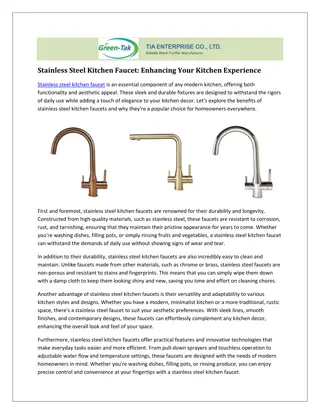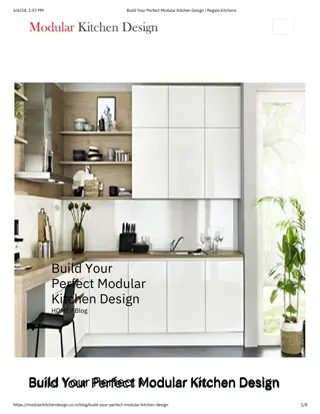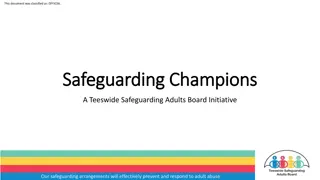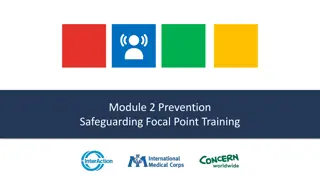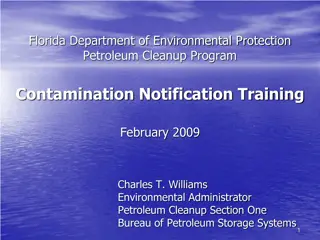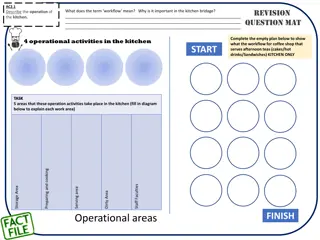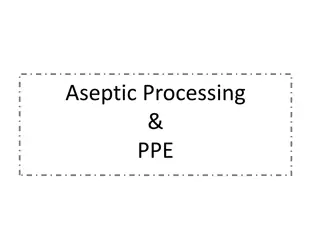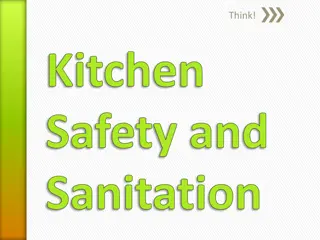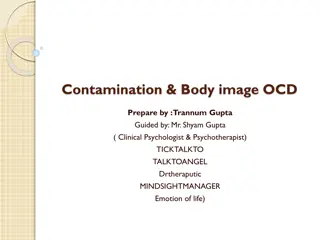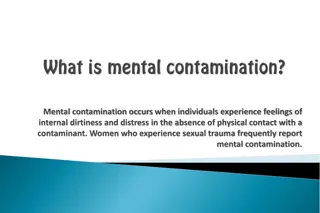Safeguarding Your Kitchen: Preventing Cross-Contamination
Cross-contamination poses a risk of foodborne illnesses and can occur in multiple ways, such as using the same utensils for raw and cooked foods. Taking specific cleaning steps at home, like regularly cleaning dish cloths and sanitizing surfaces, is vital to preventing harmful bacteria from spreading. Analyzing your kitchen and creating a checklist for clean and safe kitchen practices can ensure effective monitoring of hygiene levels. By following these practices, you can maintain a healthy environment in your kitchen and minimize the risk of food contamination.
Download Presentation

Please find below an Image/Link to download the presentation.
The content on the website is provided AS IS for your information and personal use only. It may not be sold, licensed, or shared on other websites without obtaining consent from the author.If you encounter any issues during the download, it is possible that the publisher has removed the file from their server.
You are allowed to download the files provided on this website for personal or commercial use, subject to the condition that they are used lawfully. All files are the property of their respective owners.
The content on the website is provided AS IS for your information and personal use only. It may not be sold, licensed, or shared on other websites without obtaining consent from the author.
E N D
Presentation Transcript
Objectives 1.Define cross contamination and identify ways that it could happen. 2. Identify cleaning steps which can be done at home to prevent harmful bacteria from spreading.
Objectives 3. Analyze the home kitchen and create a checklist for clean and safe kitchen monitoring.
Objective 1 Define cross contamination and identify ways that it could happen. Cross Contamination: Occurs when harmful bacteria is unintentionally transferred from one surface to another causing a higher risk for foodborne illness.
Objective 1 Examples of Cross Contamination: Sitting a food item on a dirty kitchen counter before eating it Using the same cutting board and/or knife to cut raw chicken and fresh vegetables without washing Using the same tongs on cooked chicken that were used previously on the uncooked chicken
Objective 2 Identify cleaning steps which can be done at home to prevent harmful bacteria from spreading. Cleaning Steps: Clean dish cloths regularly Throw away and replace sponges often (recommended not to use) Clean all surfaces and all handles. Clean sinks and drains Clean refrigerator shelves and throw away expired food.
Objective 3 Analyze the home kitchen and create a checklist for clean and safe kitchen monitoring. After analysis it can be applied. Simple sanitation solution: 1tsp of unscented liquid chlorine bleach 1qt water Spray solution on surfaces, allow to air dry for 2-3 min. Wipe down with a clean paper towel
Summary Cross contamination can be extremely harmful and can happen in various ways. Steps taken with cleaning methods can prevent bacteria from spreading. Analyzing the kitchen and creating a checklist helps monitor safe cleaning.



